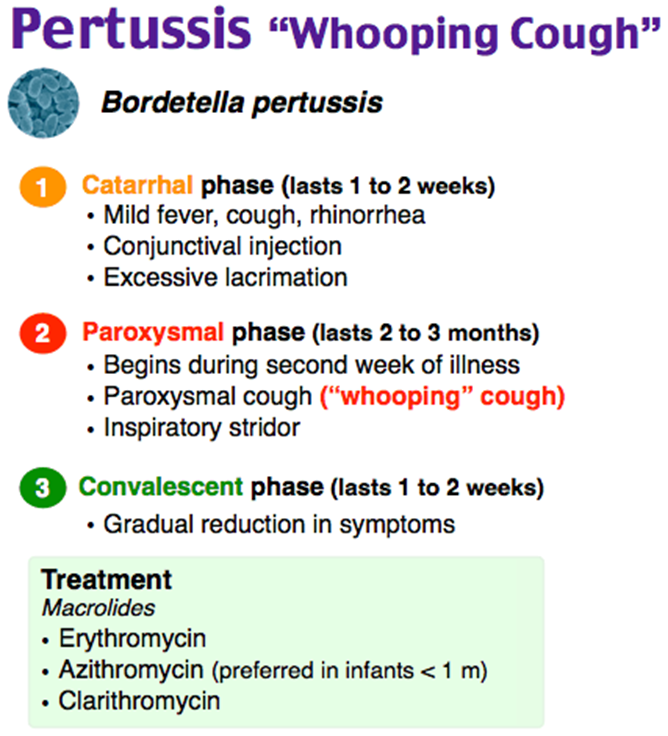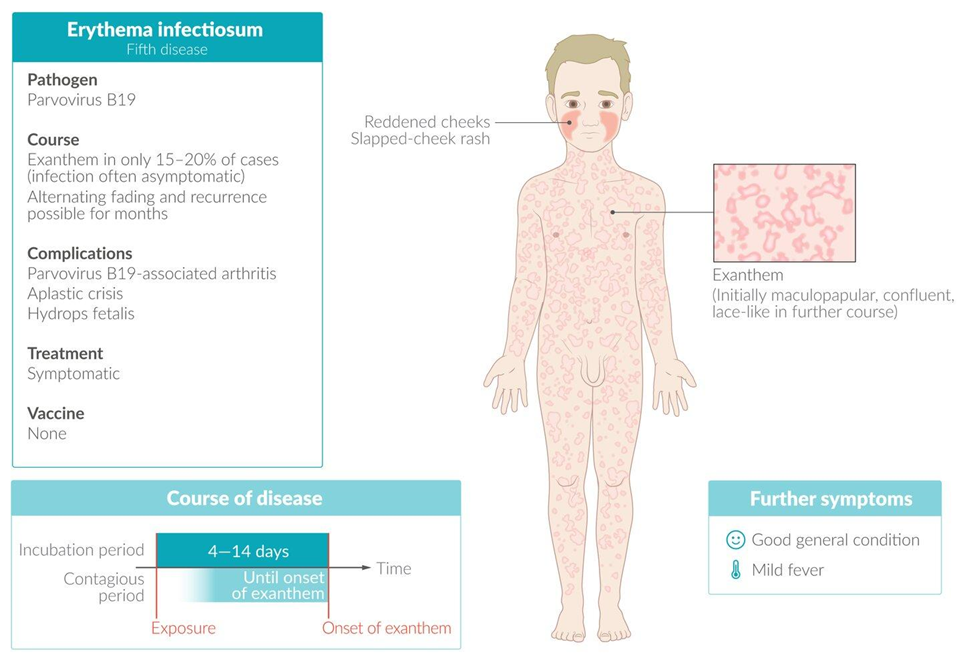The nurse provides home care instructions to the parents of a child hospitalized with pertussis who is in the convalescent stage and is being prepared for discharge. Which statement by a parent indicates a need for further instruction?
Coughing spells may be triggered by dust or smoke."
We need to maintain droplet precautions and a quiet environment for at least 2 weeks.
"We need to encourage our child to drink fluids.
Vomiting may occur when our child has coughing episodes."
The Correct Answer is B
A. Coughing spells may be triggered by dust or smoke:
Incorrect: This is a correct statement. Irritants like dust or smoke can trigger coughing spells in a child recovering from pertussis.
B. We need to maintain droplet precautions and a quiet environment for at least 2 weeks.
Correct Answer: Pertussis is highly contagious during the catarrhal and paroxysmal stages, but once the child has reached the convalescent stage (usually after 2-4 weeks of illness), the risk of spreading the infection decreases significantly. Continuing strict droplet precautions and a quiet environment for two weeks after the convalescent stage is not necessary.
C. "We need to encourage our child to drink fluids":
Incorrect: This is a correct statement. Encouraging fluid intake is important to prevent dehydration, especially during coughing spells.
D. Vomiting may occur when our child has coughing episodes:
Incorrect: This is a correct statement. Vomiting can be a common occurrence during coughing episodes in pertussis due to the forceful nature of the cough. Parents should be aware of this symptom.

Nursing Test Bank
Naxlex Comprehensive Predictor Exams
Related Questions
Correct Answer is ["A","B","C","D","E"]
Explanation
A. The child and family will integrate diabetes care into patterns of daily activity:
Correct Answer: Correct.
Explanation: Integrating diabetes care into daily activities helps the child manage their condition more effectively. This goal encourages normalization of the routine, making it easier for the child to participate in social events.
B. The child and family will discuss all aspects of the illness and its treatments:
Correct Answer: Correct.
Explanation: Open communication about the illness and its treatments is crucial for understanding and managing diabetes. This goal promotes family education and support, which can help alleviate concerns.
C. The child will use effective coping mechanisms to manage anxiety:
Correct Answer: Correct.
Explanation: Managing anxiety is important for overall well-being. Teaching the child effective coping mechanisms helps them navigate the emotional aspects of living with diabetes and participating in social events.
D. The child and family will discuss their concerns with the child's teachers and the school nurse:
Correct Answer: Correct.
Explanation: Communication with school personnel is essential to ensure a supportive environment for the child. Discussing concerns with teachers and the school nurse promotes awareness and collaboration in managing the child's diabetes at school.
E. The child's normal growth and development will be maintained:
Correct Answer: Correct.
Explanation: Maintaining normal growth and development is a crucial goal. It ensures that the child can engage in age-appropriate activities and social events while managing their diabetes effectively.
Correct Answer is C
Explanation
A. A highly pruritic profuse macule to papule rash on the trunk
Explanation: This description does not fit the typical characteristics of erythema infectiosum. Fifth disease is not typically associated with a highly pruritic rash.
B. A discrete pinkish red maculopapular rash that is spreading to the trunk
Explanation: While erythema infectiosum does involve a rash that can spread to the trunk, the distinctive "slapped face" appearance is a key characteristic that is not captured in this option.
C. An erythema on the face that has a "slapped face" appearance.
Explanation:
Erythema infectiosum, commonly known as fifth disease or slapped cheek syndrome, is characterized by a distinctive facial rash that gives the appearance of a "slapped face." The rash typically starts on the face and then spreads to the trunk and extremities. It often begins with erythema on the cheeks, giving the child a flushed or slapped appearance, followed by a discrete rose-pink maculopapular rash on the trunk.
D. A discrete rose-pink maculopapular rash on the trunk
Explanation: This description fits the typical characteristics of the rash seen in erythema infectiosum, but the key identifier is the "slapped face" appearance on the face.

Whether you are a student looking to ace your exams or a practicing nurse seeking to enhance your expertise , our nursing education contents will empower you with the confidence and competence to make a difference in the lives of patients and become a respected leader in the healthcare field.
Visit Naxlex, invest in your future and unlock endless possibilities with our unparalleled nursing education contents today
Report Wrong Answer on the Current Question
Do you disagree with the answer? If yes, what is your expected answer? Explain.
Kindly be descriptive with the issue you are facing.
